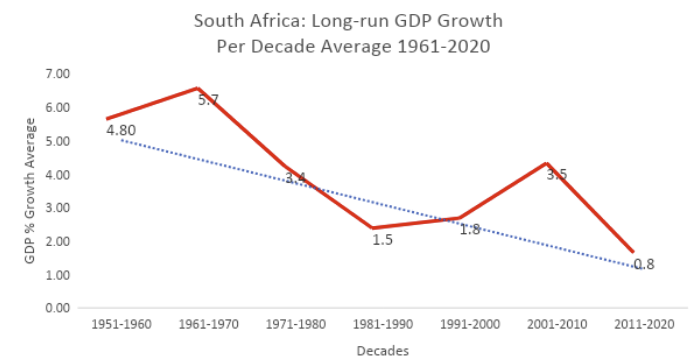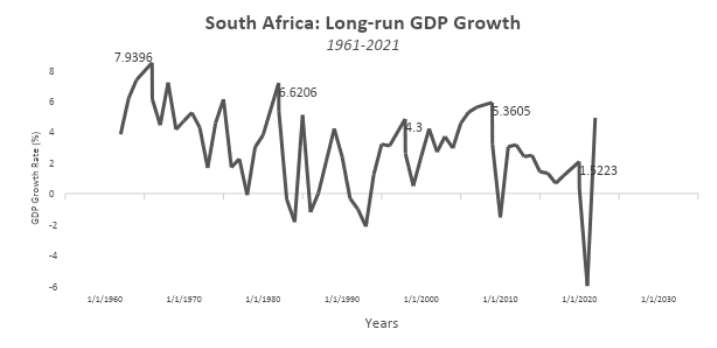URBAN PLANNING OP-ED
Why South Africa would benefit from denser cities

South African cities are low-density and feature significant urban sprawl. Low-density, car-based cities are less economically efficient, less productive and far worse for the environment than high-density cities.
The story of South Africa’s economic growth is one of sustained decline. After a growth peak in the 1960s of 5.7%, average economic growth in 2011-2020 averaged just 0.8%. There are many reasons, but urban planning and densification are ones that seldom come up, despite the compelling evidence that suggests they should be priorities.
To understand the present, looking at the past is important.
After rapid growth in the interbellum and pre-apartheid period, the 1960s saw a shift to declining growth. When trying to understand this, the apartheid government created the Riekert Commission (1979), which found that the labour market was so heavily distorted by apartheid that it created severe growth constraints for the economy — this later led to the winding down of apartheid laws around segregated education in the 1980s.
The Riekert Commission also mentioned that if cities were allowed to urbanise faster, there would be significant economic growth, but cautioned against it due to “direct and indirect social costs” — a poorly disguised apartheid-style racist remark. But such was the ideological persuasion of the apartheid era, that segregation continued despite the economic cost.
The apartheid government completely disrupted and de-urbanised South African cities through the Group Areas Act.

Source: World Bank Data (2023)

Source: World Bank Data (2023)
The effect of the Group Areas Act (GAA) has largely been to depopulate city centres and create moats around areas of economic opportunity.
Enacted in the 1950s shortly after apartheid began, the GAA systematically removed black people from city centres to far-flung townships on the outskirts of the city. Hundreds of thousands of people were displaced almost overnight. These removals persisted well into the 1980s. Today, as we know, despite some inching progress, South Africans still live predominantly in racially separated areas and integration has been slow.
Is it a coincidence that economic growth abruptly slowed after the GAA? Most economists acknowledge that densely populated cities are critical for growth.
Sixty-eight percent of the South African population is urbanised. This is nearly comparable to the UK, US and France at ~80%, and is higher than China (62%), Vietnam (40%) and Kenya (28%). However, South African cities are low density and feature significant urban sprawl. Low-density, car-based cities are less economically efficient, less productive and far worse for the environment than high-density cities.
Moreover, South African cities feature heavy regulation on zoning: strong separation between commercial and residential, and low levels of mixed-use zoning.
Urban separation
Post-1994 policy has entrenched urban separation, not through planning regulations, which have been progressive, but through a lack of implementation. When the government builds public housing or what became known as RDP houses, it tends to build them not in the city, which would be closer to jobs and consumer markets, but in the far-flung outskirts of the city — in the townships. Moreover, the government often builds freestanding homes rather than cost-efficient apartment blocks.
The former are far more expensive per unit, and the global standard has been towards leveraging economies of scale through apartment blocks, and while in places this is reflective of the personal preferences of the home occupants, it does not correspond to a wider, structural drive for economic prosperity.
Recent interventions have doubled down on building the township economy, which is welcome, particularly in terms of the development of the informal economy, which employs 17% of South Africans and generates billions in GDP.
Acclaimed KasiNomics author GG Alcock has spoken on the need for increased integration of the informal and formal economies to drive growth, describing prevailing attitudes to informal businesses as short-sighted.
Formal jobs are often based in city centres with higher wages, and not in townships. The effect is that most people are commuting long distances from their homes to places of employment. Low-income families in South Africa can spend between 43% of their salary on transport alone, according to the Cape Town Committee for Transport and Urban Development, while other sources cited 51% and higher.
If South Africans could shift their spending from an exorbitant amount on transport, to goods, education, healthcare, recreation and other services, imagine the improvement in wellbeing and new jobs that could be created…
Highest GDP cities
There is evidence that the world’s highest GDP cities are very high-density. This pattern of urbanisation is not just a byproduct of industrialisation but a function of it. It is far cheaper for workers to live close to their places of work for both the worker and the employer; high volumes of workers can support affordable public transport networks like subways that have high initial upfront costs and capital expenditure; it also improves access to markets for consumers and small and medium enterprises (SMEs), retailers, entrepreneurs and farmers.
In addition, economic costs are lowered across the board — transaction costs, search costs, etc. This embeds economies of scale at a city level, allowing the clustering of industry but also the division of labour at very low economic costs.
It is much easier to advertise and sell a product to a street that gets foot traffic of 100,000 as opposed to a street that gets 50 people. Low density means the advertiser must spend much more money to achieve the same amount of advertising impact. This small example demonstrates the massive knock-on effect across the entire economy, and how low-density urban spaces create barriers to entry for businesses, particularly SMEs.
Denser cities greener
Finally, it has been found that denser cities are greener, more cost-effective and less impactful on the environment as people can walk to facilities that are closer. Denser cities also allow for cost-effective public transit infrastructure like subways and commuter trains, which South Africa largely lacks.
They are also more efficient, with estimates that traffic jams can cost between 2-4% of GDP through lost time, wasted fuel and increased costs of doing business.
Highly nucleated cities; in other words, ones that have very dense city centres, have the most urban mobility options due to ample choice and availability of private and public facilities.
In cities like Bogotá, Taipei, Hoi An and Amsterdam, more emphasis is being placed on multimodal urban mobility — walking, buses, trains and bikes, alongside cars. Each form of transport necessitates its own infrastructure environment; for example, pedestrians may require better lighting, street signage, paving and greenery, which many South Africans can acknowledge is often missing, sometimes even in high-income areas.
The design of cities is intricately tied to how well citizens can live, work, play and move in their own spaces. South African policy needs to seriously consider a widespread and impactful plan for densification of cities as a solution to some of our economic woes.
The US author Jane Jacobs, a renowned urban planning economist, championed dense, mixed-use neighbourhoods and the abolition of zoning laws as the key to a thriving, fast-growing city. Her vision placed a community at the core of city life, emphasising the social interactions of both citizens and businesses.
As the lady herself said: “Cities have the capability of providing something for everybody, only because, and only when, they are created by everybody.” DM/MC



















 Become an Insider
Become an Insider
Where do you live I wonder?
Yes, the legacy of the Group Areas Act continues to blight and stifle every village, town and city in South Africa.